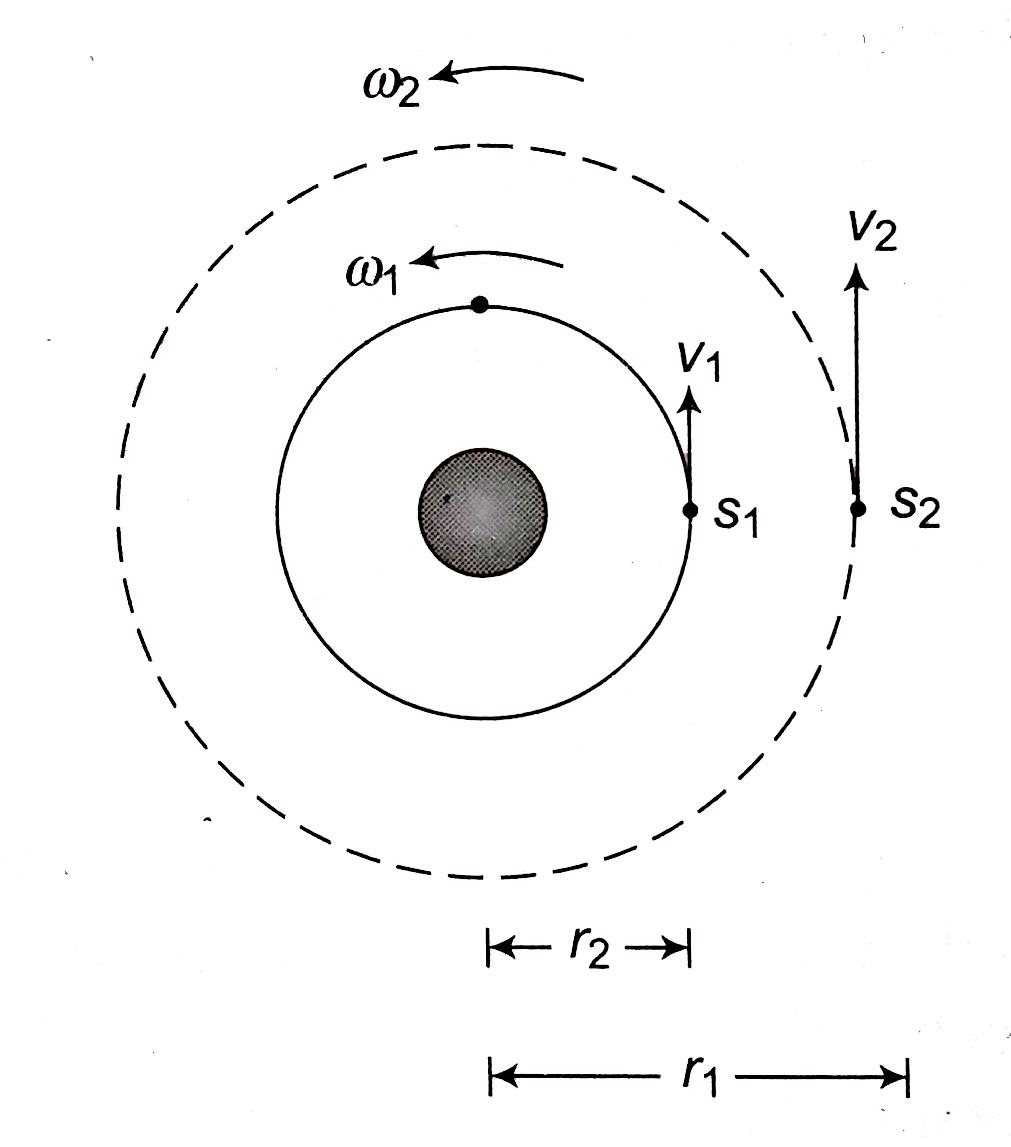Two satellites and resolve round a planet in coplaner circular orbit in the same sense. Their period of revolution are hour and hour respectively. The radius of the orbit of is . When is closest to , find
(a) The speed of relative to ,
(b) The angular speed of actually observed by an astronaut is

(a) Speed of relative to
(b) Angular speed of relative to
Topper's Solved these Questions
Similar Questions
Two satellites S1andS2 revole round a planet in coplanar circular orbits in the same sanse. Their periods of revolution are 1 hour and 8 hour respectively. The radius of the orbit of S1is104km, When S2isclosest→S1 find
(i) the speed of S2relative→S_1<br>(ii)theanga––rspeedofS_2asactuallyobservedbyan∗ronautisS_1.View SolutionTwo satellite S1andS2 revolve round a planet in coplanar circular orbits in the same sense. Their periods of revolution are 1hr and 8hours respectively. The radius of the orbit of S1is104km. When S2 is closet to S1 (i) the speed S2 relative to S1 as actually observed by an astronaut in S1.
View Solution
Knowledge Check
- Question 1 - Select One
Two satellites S1 and S2 revolve around a planet in coplanar circular orbits in the same sense their periods of revolution are 1 hour and 8hours respectively the radius of the orbit of S1 is 104 km when S1 is closest to S2 the angular speed of S2 as observed by an astronaut in S1 is :
Aπrad/hrBπ/3rad/hrC2πrad/hrDπ/2rad/hr - Question 2 - Select One
Two satellites S1 and S2 revolve round a planet in coplanar circular orbits in the same sense. TI1eir periods of revolution are 2 hours and 16 hours respectively. If the radius of the orbit of S1 is 104, then the radius of the orbit of S2 is
A8×104 KmB2×104 KmC16×104 KmD4×104 km - Question 3 - Select One
Two satellite S1 and S2 revolve around a planet in coplanar circular orbits in the opposite sense. The periods of revolutions are T and ηT respectively. Find the angular speed of S2 as observed by an astronouts in S1, are observed by an astronaut in S1, when they are closest to each other.
Aω=2π(n−13+1)T(n13−1)Bω=2π(n−13+1)T2(n23−1)Cω=2π(n−13+1)T(n23−1)Dω=2π(n−23+1)T(n−13−1)
Two saetllites S1 and S2 revolve around a planet in coplaner circular orbit in the same sense. Their periods of revolutions are 1 hour and 8 hours respectively. The radius of orbit of S1 is 104km. When S2 is closed to S1, the speed of S2 relative to S1 is π×10nkm/h. what is the value of n?
View SolutionTwo satellite S1andS2 revolve roudna planet in coplanar circular orbits in the same sense. Their periods of revoltions are 1 h nd 8 h respectively. tE radius of the orbit of S1 is 104km. When S2 is closet to S1., find as. The speed of S2 relative to S1 and b. the angular speed of S2 as observed by an astronaut in S1.
View SolutionTwo satellites S1 and S2 revolve round a planet in the same direction in circular orbits. Their periods of revolutions are 1 hour and 8 hour respectively. The radius of S1 is 104 km. The velocity of S2 with respect to S1 will be -
View SolutionS1 and S2 are two satellites revolving around a planet P in coplanar circular orbits in anticlockwise direction. Their period of revolution are 50 minutes and 400 minutes respectively. The radius of orbit of S2 is 5×104km.
(a) Find the radius of orbit of S1
(b) When S2 is closest to S1, then find (i) speed of S1 relative to S2 and (ii) angular speed of S1 as observed by astronaut in S2.View SolutionIn the above example the angular velocity of S2 as actually observed by an astronaut in S1 is -
View Solution

